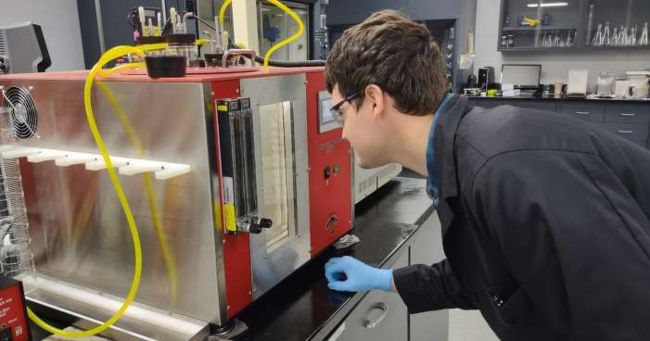IPAC
Improving Lubrication in Construction and Mining Equipment
Jeffrey A. Crow, Ph.D., Len Badal, IPAC, Inc.
I
t may sound surprising, but some in the lubricant industry still believe a Caterpillar® TO-4oil in final drives is perfectly fine. It is surprising particularly when one considers these fluids service some of the biggest and heaviest off-road equipment in use, such as mining dump-trucks, and the demands placed on their final drives. In another point of view, such a belief is not completely surprising since Caterpillar recommended TO-4for years, particularly as it related to proper frictional properties and to minimize the number of fluids required for equipment. Even before this, engine oil was used for a wide range of applications beyond engines.
As targets for efficiency, productivity, and sustainability have increased for mining and construction companies, the equipment that supports their businesses has become more complex requiring high performance lubrication from multiple fluids to ensure all components are operating efficiently. Previous approaches using a “one-for-all” lubricant for these offroad applications is no longer sufficient. Today’s large haul trucks have separate compartments and mechanical drives for wet brakes, and when the choice for lubricating this compartment is a 10W fluid, a separate fluid that can handle high loads on bearings and drive gears is more important than ever. The combination of higher temperatures and these higher loads creates an immense amount of strain on the axles, differentials, and final drives. So today, it is highly recommended to use a special fluid for these highly loaded compartments, and that fluid is one that conforms to the Caterpillar FD-1specification. This is a specification developed by Caterpillar to better define the performance needed in these cases.
Fluids that are suitable for an FD-1type performance will have numerous improved attributes that will lead to a longer life of these highly loaded components. In the most simplistic sense, allowing for a much higher viscosity goes a long way, and FD-1fluids are typically SAE 60 weights. Optimization of viscosity alone accounts for significant improvement in micropitting performance. Using a properly formulated FD-1fluid in the rear differentials on mining haul truck vehicles helps reduce micropitting in the gears and provides longer equipment life, reduced downtime, and directionally lower operating cost per ton for the site when compared to using TO-4lubricant technology.

In addition to the fluid having the proper viscosity, utilizing a high-performance quality package like International Petroleum Products & Additives Company (IPAC) 9188, designed specifically for where FD-1fluids are indicated, provides optimized additive technology that delivers protection for these highly loaded final drives and axles. This package ensures the fluid will protect against wear, scuffing, thermal and oxidation degradation, all the while maintaining elastomer compatibility. This package is designed for final drives that do not contain friction material. Friction is optimized specifically for final drives, to protect against micropitting and other modes of fatigue and failure.
It is noteworthy that it is not advisable to use FD-1fluids where it is not indicated, particularly for wet brake applications, as the fluid is not designed for those applications. Some equipment and wet brake applications require an unusually high level of friction for optimal brake torque capacity, and this may not be provided by an FD-1fluid.
Key areas where FD-1fluids formulated with IPAC 9188 excel over TO-4fluids include scuffing and micropitting protection, along with bearing protection and corrosion, oxidation, and thermal stability in the finished fluid. Furthermore, roller bearing protection across a broad range of lubrication regimes is ensured when the fluid is optimized. Bearings often encounter a wide range of conditions because the ratio of oil thickness to surface roughness spans the hydrodynamic, mixed and boundary lubrication conditions. With elastohydrodynamic (EHD) conditions that fall between hydrodynamic and mixed zones being predominant as well, lubricant formulators can ensure proper lubrication is maintained with FD-1fluids. The cleanliness imparted to gear surfaces is another key enhancement.
IPAC is dedicated to developing the next generation of additives and fluids for the construction and mining markets. These are key segments in the global economy and IPAC is focused on providing high quality, technologically advanced additives to ensure superb reliability and operating performance. The chemistry IPAC delivers to the market is designed to improve efficiency, provide longer fluid life, and reduce wear to protect equipment for longer service. Visit IPAC today at www.ipac-inc.com.